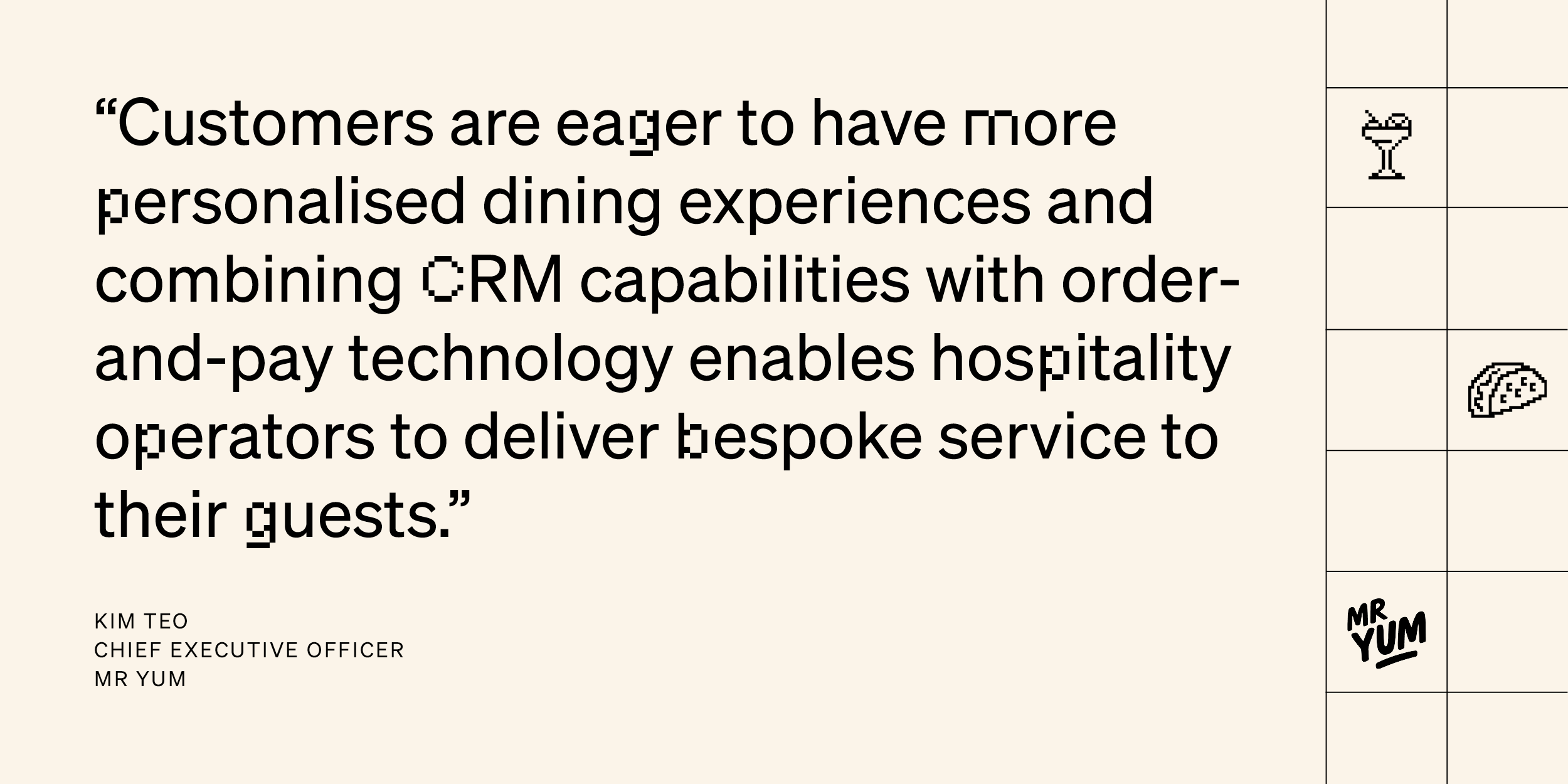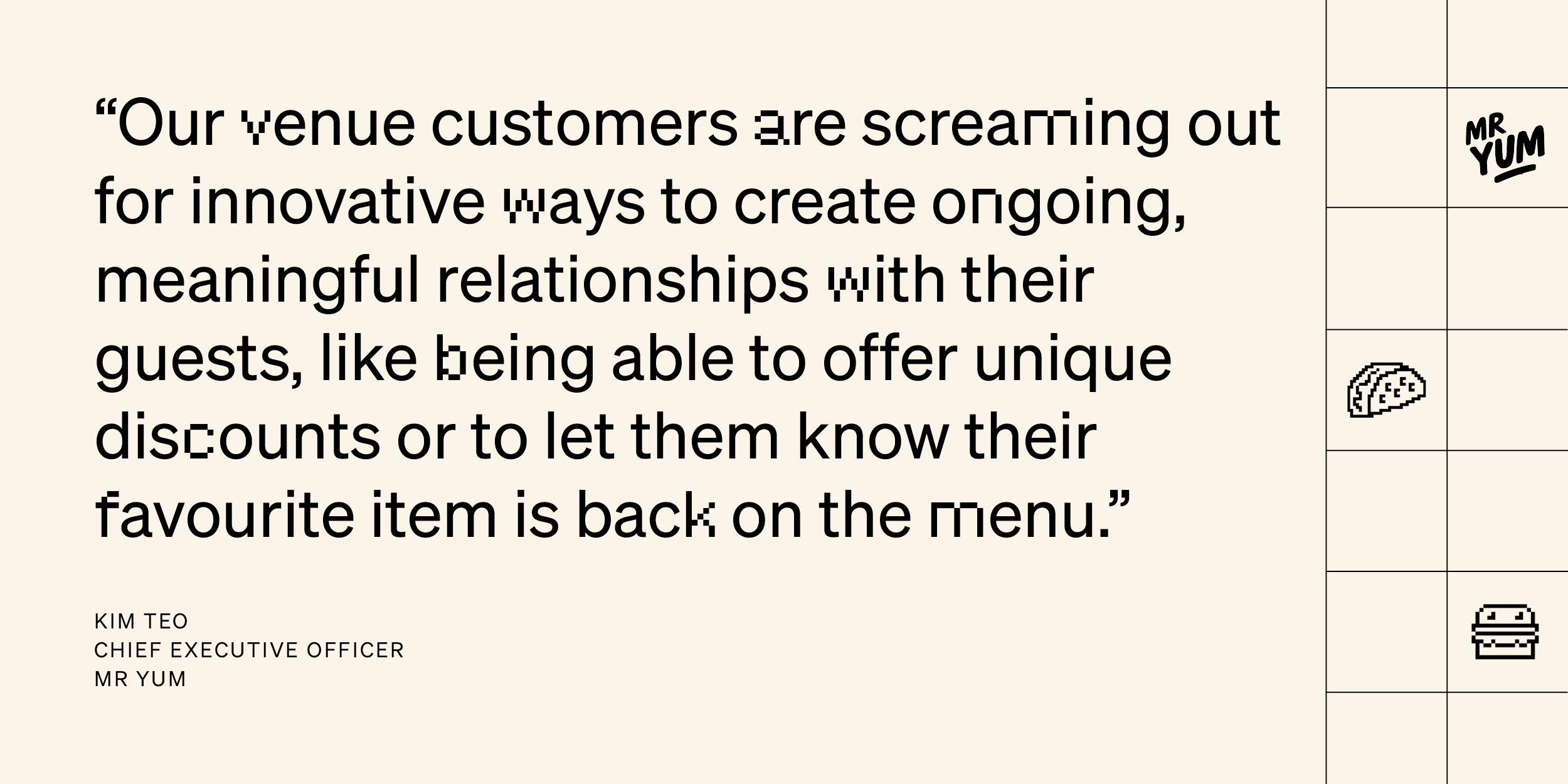Mobile-powered ordering and payment platforms are here to stay. The hospitality industry has seen a massive swing towards tech in recent years, and in part, this was accelerated by Covid. As a result, what was once a novelty has become a norm, and the benefits haven’t gone unnoticed by businesses and punters alike (the average Mr Yum venue experiences a 30% increase in order sizes).
Putting our horse in the race aside, we’re thrilled to see how this tech has helped hospitality businesses to grow, and we love to see that growth whether the business is partnered with us or not. This is why we’re going to share the secret ingredients that have helped Mr Yum venues build on that impressive growth and take it to the next level.
Digesting data
When customers use a QR-powered ordering and payment platform, they impart valuable data. Tracking this data is an excellent way for businesses to learn their customers' preferences, how to best communicate with them and their venue’s greatest strengths.
This data is also where our secret ingredient comes into play. We’re not just an ordering and payment platform; we have a CRM up our sleeve, too – which unlocks a tonne of untapped potential for restaurants.
What’s a CRM?
CRM stands for customer relationship management, and it’s a type of tech that (unsurprisingly) helps manage customer relationships. In a hospitality context, the marketing tool takes the valuable information that venues already have and uses it to help increase return visits. And as anyone in the food and drink game knows, returning customers are the key to a successful business.

How a CRM connects to order and pay
Adding an extra level of tech might sound complicated, but it’s more of a natural progression that enhances your existing systems. Here’s an overview of how everything works together:
- Customers order through their smartphones and opt-in to receive communications. This is most efficient if you offer an incentive such as a loyalty program (through this method, Wynyard Pavilion’s database grew by 4000 active users over the space of three months.)
- You capture data from their order and create a customer profile that shows what they like to eat and drink and even when they like to visit.
- This information is then fed into the CRM, which allows tailored email and SMS offers that use insights to bring those customers back into your venue.
Automating the process
Turning that data into actions might sound like a lot of work. And in some instances, it can be.
Traditionally, businesses would have to go to a consultant or marketing agency to transform their data into campaigns. However, with CRMs such as our own, email or SMS offers can be sent customers with the push of a few buttons. Everything is automated, creating communications that customers will actually care about to be sent.

For example, if you want to target customers who have previously spent more than $40 on cocktails, you can set up those parameters and send them happy hour offers and cocktail deals that are much more likely to resonate than a generic offer.
What do customers think of communications?
This is a burning question that many venue owners wrestle with. Will they be annoying their potential customers with communications?
According to research commissioned by Mr Yum*, 6 in 10 people say that in order to support their favourite hospitality venue, they would join its loyalty program. And 2 in 3 say that earning points on orders that can be redeemed for £ discounts would incentivise them to join a loyalty program. Other popular incentives to consider include a percentage discount on every visit (popular with 6 in 10 people) and exclusive member benefits, such as a free birthday drink or meal (1 in 2). Just 5% of people say they are not interested in such schemes.
Less than 1 in 10 people say communication from a venue after their visit would not encourage them to return. Even a simple “thank you for visiting” message would make 1 in 4 people likely to return, with the majority (52%) saying a points-based loyalty scheme would make them more likely to return, and 7 in 10 saying a promo code for a percentage discount on their next visit would get them back in the door.
Keep in mind
Not all CRMs are created equally, so do your homework when choosing one to ensure it plays nicely with hospitality’s unique requirements. For instance, a hospitality-focused CRM will know the value of objectives, such as bringing in more customers Tuesday-Thursday. On the other hand, an out-the-box generic CRM will need to be tinkered with to track those objectives and help you achieve them.
CRM in action
Sometimes some good old-fashioned numbers are the best way to realise the value of a CRM. In the UK, our partners have seen exceptional results:
Boxpark’s database increased from 600,000 to 1.5 million over 12 months, and engagement rates went from 5-6% to over 42%.
Shake Shack UK’s email opening rates now exceed 40% (after starting out with a database of 0).
Beds & Bars grew its database from 19,000 to 240,000, with open rates going from less than 10% to between 25-30%.
Vapiano generated £18,000 over one weekend through an SMS campaign targeting customers who had purchased in the last three months. (This cost them just £600 – resulting in an ROI of 2900%!)
If you’re interested in learning more about Mr Yum’s CRM and booking a demo, head to mryum.com.
*The survey was conducted by Pollfish for Mr Yum of a statistically representative sample of 500 people aged 18-54 from London, Liverpool, Manchester, Leeds, Sheffield and Newcastle. Survey conducted between Feb 16-21, 2022.


